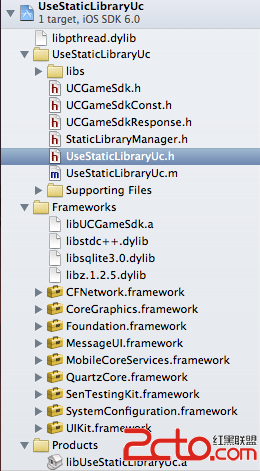COCOS2D-X 快速熟悉LUA细节问题
主要快速讲了一些Lua的特性,所以快速学习Lua的话,建议先看一遍。
一、{},构造式
{a = 1, b= 2} 等价于 {["a"] = 1,["b"] = 2}
{"x","y","z"} 等价于 {[1] = "x",[2] = "y", [3] = "z"}
如果真的需要以0为数组的话:
a = {[0] = "x","y","z"} -- 不推荐这样
二、尽量使用局部变量,便于垃圾收集器释放内存
如果是全局变量,局部使用的时候,有时可以考虑:
local temA = A
使用局部变量保存全局变量的值,如果后面函数会改变A的值,可以考虑这样,也可以加快当前域的访问速度。
三、控制语句
1、if then else
2、while
[cpp
while true or false do
-- todo
end
while true or false do
-- todo
end
3、repeat-until
[cpp]
repeat
-- todo
until true or false
repeat
-- todo
until true or false
4、for
for 起始,变量, 步长(不写默认1) do
--todo
end
5、iterator
[cpp]
for k,v in ipairs(a) do
-- k是索引
-- v是对应的value
end
for k in pairs(a) do
-- k是索引
end
for k,v in ipairs(a) do
-- k是索引
-- v是对应的value
end
for k in pairs(a) do
-- k是索引
end
可以用来逆向table:
[cpp]
revA = {}
for k,v in ipairs(a) do
revA[v] = k
end
revA = {}
for k,v in ipairs(a) do
revA[v] = k
end
注意:其他的switch、do-while 没有
五、return、break ,只能放在一个块的结束语句(end、else、until)前面
[cpp]
function func()
local x = 0
x = 1
print(x)
return -- 想在这里跳出,这样是错误的。
if(x>1) then
x = 10
end
end
function func()
local x = 0
x = 1
print(x)
return -- 想在这里跳出,这样是错误的。
if(x>1) then
x = 10
end
end
修改成:
[cpp]
function func()
local x = 0
x = 1
print(x)
do
return -- 这样才是正确的,可以执行return
end
if(x>1) then
x = 10
end
end
function func()
local x = 0
x = 1
print(x)
do
return -- 这样才是正确的,可以执行return
end
if(x>1) then
x = 10
end
end
六、function,函数可以有多个返回值
例如:
[cpp]
function func()
return "a","b" --返回2个值
end
function func()
return "a","b" --返回2个值
end
1、如果函数是表达式的最后一个,则函数保留尽可能多的返回值用来赋值变量
[cpp]
x = func() -- x = "a",返回值"b"不要
x,y = func() -- x = "a", y = "b"
x,y,z = 1,func() -- x = 1, y = "a" , z = "b" 注意func是表达式的最后一个
x,y,z = func() -- x = "a", y = "b" , z = nil 返回值不够用nil补充
x = func() -- x = "a",返回值"b"不要
x,y = func() -- x = "a", y = "b"
x,y,z = 1,func() -- x = 1, y = "a" , z = "b" 注意func是表达式的最后一个
x,y,z = func() -- x = "a", y = "b" , z = nil 返回值不够用nil补充
2、如果函数不是表达式的最后一个,则只返回一个值
[cpp]
x,y,z = func(),1 -- x = "a", y = 1, z = nil
x,y,z = func(),1 -- x = "a", y = 1, z = nil
3、函数在table构造式中,如果函数在构造式的最后一个位置,返回所有值,否则返回一个值
[cpp]
t = {func()} --t = {"a","b"}
t = {func(),2} --t = {"a",2}
t = {func()} --t = {"a","b"}
t = {func(),2} --t = {"a",2}
4、函数在return之后,返回所有值
5、如果函数在()中,则只返回一个值
[cpp]
print(func()) --输出 a b
print((func())) --函数被放在了()中,输出 a
print(func()) --输出 a b
print((func())) --函数被放在了()中,输出 a
6、函数实参可以是变长参数,如果函数实参同时包含了固定参数和变长参数,变长参数必须放在固定参数后面。请注意…的用法
七、如何写带描述的函数实参
[cpp]
//OC代码:
- (void) createRect:(float)X y:(float)Y width:(float)Width height:(float)Height
{
//TODO...
}
//OC代码:
- (void) createRect:(float)X y:(float)Y width:(float)Width height:(float)Height
{
//TODO...
}
有时候函数参数很多,想用oc这种带描述的参数。lua虽然不支持,但是可以用table实现。
[cpp]
function createRect(rectOptions)
if type(rectOptions.title) ~= "string" then
error "need title"
end
end
createRect({x = 0,y = 0 , width = 200,height = 300 , title = "hello sunny"})
function createRect(rectOptions)
if type(rectOptions.title) ~= "string" then
error "need title"
end
end
createRect({x = 0,y = 0 , width = 200,height = 300 , title = "hello sunny"})
提示:函数实参只有一个table时候,可以不要(),所以可以写成:
[cpp]
createRect{x = 0,y = 0 , width = 200,height = 300 , title = "hello sunny"}
createRect{x = 0,y = 0 , width = 200,height = 300 , title = "hello sunny"}
补充:移动开发 , 其他 ,




